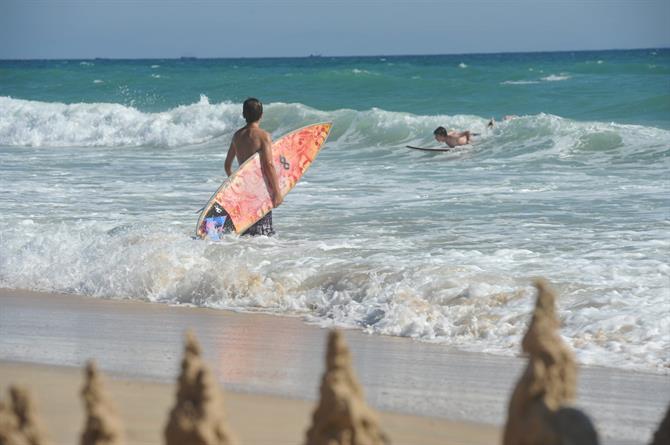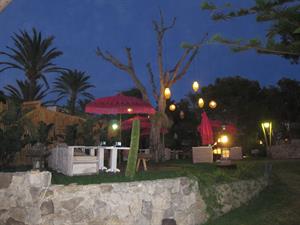Turquoise waters, miles and miles of fine golden sand and some of Spain's most idyllic coastline.....Zahara de los Atunes is without a doubt one of the jewels of the Costa de la Luz. Spain's aptly named 'light' coast.
Zahara de los Atunes is a small village situated a mere 40 kms from the more popular resort of Tarifa, known the world over for its wind and kite surfing.
While still a popular destination with the surfing community, Zahara is far more family orientated and not unlike its neighbour, beautiful Bolonia, it offers some of the most spectacular and most carefully preserved coastline in Spain.
Zahara de los Atunes has successfully managed to maintain its pristine image. Planning permissions are rigorously controlled. And enforced!
There are no high rise, all inclusive hotels. None of the swathes of concrete and lights that characterise some of the other coastal areas. First and foremost, Zahara de los Atunes remains a virgin beach destination.
This careful protection has also ensured that accommodation is restricted. Front line beach properties in Zahara are reserved quickly and stay reserved throughout the summer months. If wanting to go, book early.
Zahara de los Atunes's beach
You can't miss it.
Arriving at the village of Zahara you'll find the beach right in front of the Castle, the Castillo de las Almadrabas and just behind the local church, the Iglesia de Nuestra Señora del Carmen.
A total of 5 kms of pristine beach that offers all the services you'd require from restaurants, showers, places to rent beach chairs, to lifeguards. It is also wheelchair accessible.
Zahara is an ideal family beach.
The sand is very clean and fine, the sea, transparent and welcoming. The Atlantic is colder than the Mediterranean and the swell can pick up, but the waters around Zahara remain shallow enough for the whole family to enjoy.
The beach provides the perfect setting to watch the sunset. With the sun setting over the ocean, spotting the 'green flash' at sunset has almost become a local pastime.
Playa de Atlanterra
The Atlanterra urbanisation is only 1 km from the centre of Zahara. Atlanterra is the same name given to the stretch of beach that sits adjacent to it - the Playa de Atlanterra.


An exceptionally beautiful spot, where 'ambient-chillout' is the order of the day.
The beach front restaurant Varadero is the place to be. Carefully landscapes gardens, terraces overlooking the sea, all lit by candlelight....you couldn't hope for a more romantic place for dinner.
The urbanisation itself offers some great holiday rentals, all within a few metres from the beach.
Playa de Cabo de Plata or Playa de los Alemanes
The pearl of Zahara. The cove shaped beach is known locally as the Playa de Cabo de Plata or as the Playa de los Alemanes. 1.5 km in length and approximately 20 metres in width, the beach provides an unbeatable location to spend the day.
If walking, a good reference point, is a huge bunker that sits right on the beach. It is clearly visible from miles around.
Although there is a small parking area, it fills up quickly. It is best to arrive early.
Access to the beach is via a very steep staircase, but is well worth the walk down.
The calm, protected waters and the underwater rock formations make this area an exceptional place to snorkel.When to visit Zahara
Zahara is most definitely, a year round holiday destination.
It can get busy in the summer months and the lack of accommodation mentioned above can also be a problem.
May, June and September are good months to visit. Accommodation is also easier to find. The area's blue finned tuna is world famous and beginning to generate a lot of culinary tourism.
Peak tuna season is between April and June, when huge schools of tuna start their yearly migration from the Atlantic to the Mediterranean. An age-old fishing technique, known as the Almadraba is still employed. The Moors first introduced the practise that uses a 'maze' of nets to drive the all the fish into a central 'pool,' where they are easily collected.
The practise dates from the 15C and gives Zahara its name, 'de los Atunes' meaning from the tuna.
Needless to say, no visit is complete without trying the tuna!
